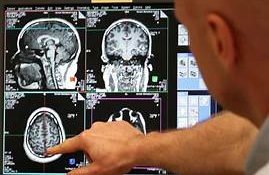New Research Suggests That Brain’s Size and Shape Play Key Roles in Thought and Behavior
Recent research challenges the long-standing belief that neuron connections are the primary drivers of thought, behavior, and emotion. A study published in Nature suggests that the shape of the brain—its size, curves, and grooves—may play a more significant role in how we think and behave than the neurons themselves.
Scientists have long believed that the billions of interconnected neurons in the brain transmit signals that allow communication between different brain regions, influencing mental processes. However, this new study conducted by researchers at Monash University in Australia proposes a different perspective.
The researchers scanned the brains of 255 people using MRIs while they performed various tasks, such as tapping their fingers or recalling sequences of images. These scans were analyzed alongside over 10,000 global brain activity maps gathered from more than 1,000 experiments.
By examining this data, the team developed a computer model to simulate how the size and shape of the brain affect the brain’s electrical activity, or brain waves. When compared to the traditional model, which focuses on neuron connectivity as the main driver of brain function, this new model proved to be a more accurate representation of the participants’ brain activity.
James Pang, the lead author of the study, likened the influence of brain shape to the way a pebble creates ripples in a pond. According to Pang, the size and shape of the pond determine how the ripples move and how they appear—similarly, the brain’s geometry influences how electrical waves behave, which in turn shapes brain activity patterns.
This groundbreaking research opens up new avenues for understanding brain function and could lead to fresh insights into the relationship between brain structure and mental processes, providing a deeper understanding of how our thoughts, emotions, and actions are formed.
The study not only challenges previous assumptions but also highlights the importance of the brain’s physical structure in determining how we process information and respond to the world around us.

